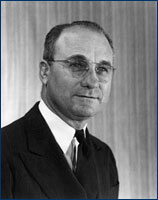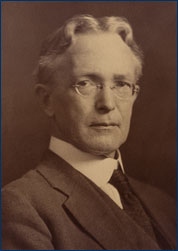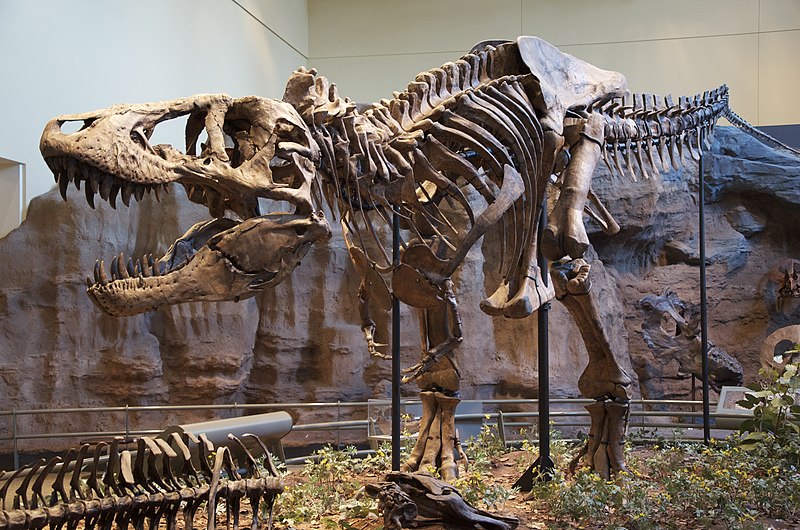This week I added some details of my education and my students to the open online academic genealogy: http://academictree.org/, and it got me thinking about my place in the history of vertebrate paleontology.
Growing up, I heard a great deal about my family genealogy. One of my great uncles on my father’s side had undertaken the gargantuan task of creating a family tree in the pre-internet age. He produced a self-published book that, amongst other things, showed that my Davis lineage does not descend from Jefferson Davis, the President of the Confederacy. My family actually had folks on both sides of the American Civil War, and the family history I’ve heard indicates that one Davis ancestor owned the haberdashery where Abraham Lincoln purchased the stovepipe hat he wore to Ford’s Theater that fateful night.
While I was in graduate school at Berkeley, I learned that academics have a separate, parallel scholarly genealogy. I knew that my advisor, Anthony Barnosky, got his PhD from John Rensberger at the University of Washington. John has his own interesting story that I won’t go into here. He, in turn, had been a student of Reuben Stirton at UC Berkeley. Eventually, I learned that Stirton had been a student of W.D. Matthew, also of UC Berkeley, but that was the limit of my knowledge.
I am delighted to have found the academic tree online, because now I can trace my lineage back before Matthew. It seems that I’m only 5 generations separated from the great Henry Fairfield Osborn of the American Museum. That’s the same Osborn that named Tyrannosaurus rex and Velociraptor mongoliensis!
Additionally, Osborn worked under both Edward Drinker Cope and Thomas Huxley, making me only six generations separated from those noble men of science. Cope published fossils from Fossil Lake Oregon that we still have in our collection at the University of Oregon Museum of Natural and Cultural History. Those specimens were collected in the 19th century by Oregon’s pioneer geologist Thomas Condon (first professor of science at the University of Oregon), and I’ve held them in my hands.
Additionally, some of Condon’s collections of horses from the John Day region (now John Day National Monument) were on loan to O.C. Marsh at Yale when Huxley visited the US, leading to Huxley’s famous Eohippus + Eohomo sketch.
As if that weren’t enough, Cope studied under Joseph Leidy at the University of Pennsylvania. Leidy was the first scientist to publish fossils Thomas Condon found in Oregon, and we still have some of his type specimens in our collection today.
I’ve been happy to be able to hold and study specimens that were investigated by these noted men of science, but to understand that the intellectual mentorship chain of which I’m a part also connects me to them is much more satisfying. In the end, knowing where you’ve come from can give you a better idea of where you’re going: I disagree with some of the scientific positions held by my academic ancestors*, but I can tell from their writing that strong mentoring in question-driven science connects me through time to these big thinkers of paleontology. OK, not Marsh, but I’m not claiming that lineage…
One of the other points to notice about my academic geneaology is the relative restriction in university affiliations. Leading back from me, we see these universities represented: Oregon, Berkeley, Washington, Berkeley, Berkeley, American Museum, Cambridge (choosing the Huxley line). Three out of seven generations at Berkeley? I think this genealogy reflects the relatively restricted number of programs in vertebrate paleontology through the first half of the 20th century. If we look at, for example, my friend John Hutchinson**, he traces his academic ancestry back through five generations to… Henry Fairfield Osborn. On both sides. Well now. I wonder if most of the vertebrate paleontologsits in the US could trace back to Osborn or to Cope or Marsh? Anyway, John’s ancestry traces back through these institutions: Berkeley, Yale, American Museum, American Museum, American Museum, Cambridge. I had heard from my paleo-elders that the American Museum and Berkeley programs had the strongest influences on the field of vertebrate paleontology through the first half of the 20th century, and I think we’re seeing the effects here.
The other point to notice about my academic family tree is the monolithic maleness of it all. I can’t comment too much here, other than to point out that Tony, my advisor, has seven women out of fourteen graduate students, and half of my two graduate students are women as well. We’re working on it.
*For example, Cope was a founder of the Neo-Lamarckist school of evolution, Osborn was a eugenicist who believed man must have originated in Asia, and Matthew was clearly unimpressed with the theory of continental drift.
**I’ve included John, a T. rex expert, because of my somewhat gratuitous T. rex reference earlier. John has has an excellent blog: What’s in John’s Freezer. It’s inspired me to get my own freezer, albeit of much more modest dimensions.







Cool post. Huzzah! Thanks for spreading the freezer gospel.
Oh look, you added me! I’m only 6 generations removed from Henry Osborn, how exciting!
…aw shit, though, 7 from Cope.